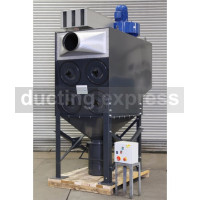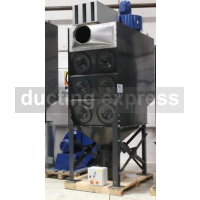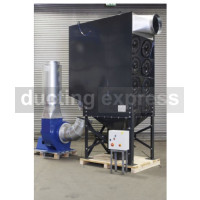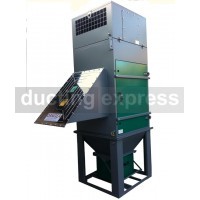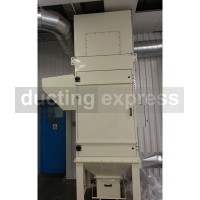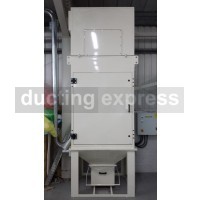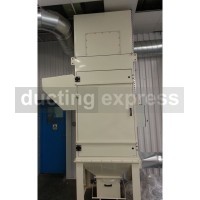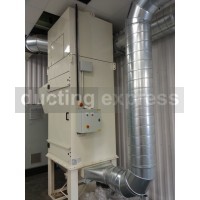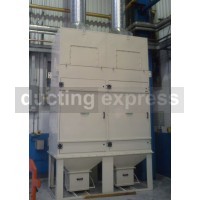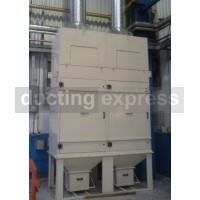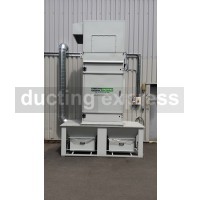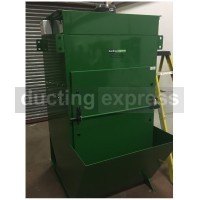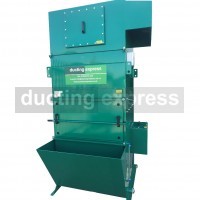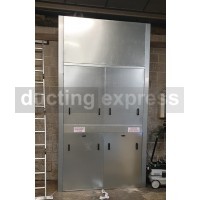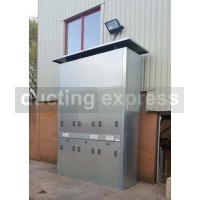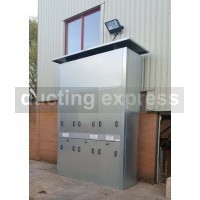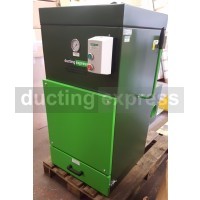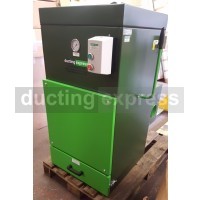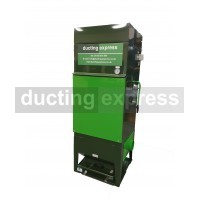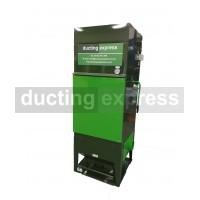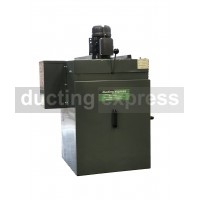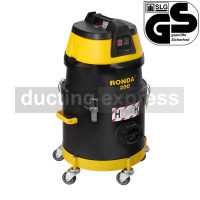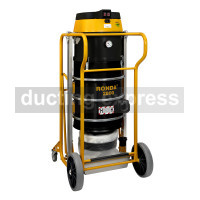Dust Extraction Filter Units
Ducting Express offer a large range of dust extractors to suit various levels of extraction requirements within your workshop.
Dust Extraction Systems are used to remove airborne hazardous substances from within a working environment. They are a key element in ensuring the health & safety of your employees.
What is a Dust Extractor?
Lots of processes within a workplace can create dust and fumes. These can be harmful if breathed in by your employees. The HSE require employers to control these hazardous substances using Local Exhaust Ventilation. Extraction filter units quite often form part of a LEV system as they remove the contaminants from the airflow for safe disposal.
Our standard design workshop dust extractor units are specially designed units for safe extraction of various types of dust. They are suitable when there is no process modification necessary. We can also work with you to create a bespoke system to suit your workshops needs.
How do dust extraction units work?
Dust Extraction Units work by extracting dust and harmful substances from as close to the point where they arise. They work on the basic principle of capture, convey and collect.
Capture - Dust will be captured as close to its source as possible using fittings such as capture hoods. Quite often, your workshop machines which are producing dust will have a port to which an extraction point can be directly attached.
Convey - Any dust captured will then be conveyed using a ductwork system, we can work with you to design the ducting system to ensure the correct air velocity required is met. Incorrectly sized ducting can cause material to settle in the duct work and clog the system.
Collect - Once the dust has been safely conveyed it will need to be collected. Depending on your processes, your workshop, employees and the type of dust being extracted, a suitable method of collection will be chosen. This can be as simple as passing the suspended dust through a filter or into plastic collection bags for safe disposal.
For example, within a joinery workshop many of the tools used within the woodworking process will cause wood dust to be released into the air. Dust extraction systems can be used to extract from the source (capture), convey through duct work to the woodworking dust extractor where these harmful contaminants can be safely removed from the air and collected for safe disposal, creating a safe working environment for you and your employees.
Why should I have an Industrial Dust Extractor?
There are many reasons why you would choose to install industrial extraction units in your workshop. Some of the main factors to consider are:
To ensure the health & safety of your employees - Airbourne hazardous materials can, not only, create an unpleasant working environment for staff, some types of dust can cause serious health problems such as respiratory allergies, infection, skin disorders, asthma, cancer and pulmonary disease. Slip & trip hazards are also caused by the build up of dust on surfaces.
To prevent fires and explosions - Some dusts are flammable and in some circumstances can even present an explosion hazard which can result in disastrous amounts of damage.
To reduce maintenance issues - An excessive build up of dust can get into your workshop’s machinery and equipment which can create problems with their operation and efficiency.
What are the benefits of having industrial dust extraction systems?
Industrial filter units could prove extremely valuable in the long-term. Not only will they ensure that you are legally compliant to COSHH 2002 regulations by controlling hazardous substances in your workshop but it will help to reduce time and costs cleaning up settled dust.
Not sure which dust extraction filter unit is the most suitable for your workplace? Ducting Express have an experienced team of dust & fume control engineers, with over 100 years of experience working with dust & fume management. Call us on 01455 616 444 to discuss how we can help you to select the best industrial dust extractor to successfully control airborne hazardous substances in your workplace.
-

DE28 Cartridge Unit ATEX 22 - 5.5kW 5400m3/hr Inlet/Outlet 315mm
£12,433.85
View options > -

DE312 Cartridge Unit ATEX 22 - 7.5kW 8400m3/hr Inlet/Outlet 350mm
£13,863.85
View options > -

DE416 Cartridge Unit ATEX 22 - 11kW 11200m3/hr Inlet/Outlet 400mm
£15,293.85
View options > -

New Dust Extraction Filter Type 15M 4kw 3400 M3H
Sorry, out of stock
-

New Dust Extraction Filter Type 25M 7.5kw 6000 M3h
Sorry, out of stock
-

New Dust Extraction Filter Type 25M 11kw 8000 M3H
Sorry, out of stock
-

New Dust Extraction Filter Type 32M 7.5kw 6200 M3H
Sorry, out of stock
-

New Dust Extraction Filter Type 40M 11kw 7500 M3H
Sorry, out of stock
-

New Dust Extraction Filter Type 80M 2 X 11 KW 12000 M3H
Sorry, out of stock
-

New Dust Extraction Filter Type 80M 2 X 7.5 KW 10000 M3H
Sorry, out of stock
-

New Dust Extraction Filter Type 40M 11kw 7500 M3H Twin Bin
Sorry, out of stock
-

W20 NoN/ATEX Wet Collector Filter Unit 7.5kw Main Fan Volume 6000 M3h
Sorry, out of stock
-

W20 ATEX 22 Wet Collector Filter Unit 7.5kw Main Fan Volume 6000 M3h
Sorry, out of stock
-

Fully Clad Single Bag Dust Extractor 1350 M3H 3kW Weatherproofed
£4,218.10
View options > -

Fully Clad 2 Bag Dust Extractor 2300 M3H 4kW Weatherproofed
£5,033.12
View options > -

Fully Clad 3 Bag Dust Extractor 4200 M3H 5.5kW Weatherproofed
£6,302.23
View options > -

Fully Clad 4 Bag Dust Extractor 5000 M3H 7.5kW Weatherproofed
£6,453.26
View options > -

New Dust Extraction Filter Type DE/MS50
£3,433.32
View options > -

New Dust Extraction Filter Type DE/MS50 ATEX
£4,016.93
View options > -

New Dust Extraction Filter Non-ATEX Type DE/MS100
£4,735.37
View options > -

New Dust Extraction Filter ATEX Type DE/MS100
£5,318.97
View options > -

New Dust Extraction Filter Type 2.5MC 2.2kw 1500 M3H 3 Phase Or Single Phase
£2,057.55
View options > -

RONDA 200H High Industrial Powered Vacuum 230V (82061005)
£970.53
-

RONDA 2800H High Industrial Powered Vacuum 230V (82.16.2800)
£3,825.01
